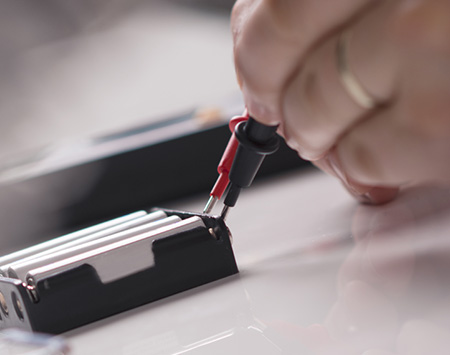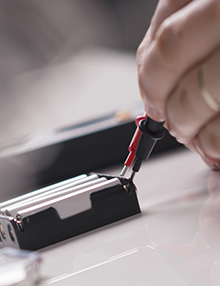There's nothing more frustrating than having a battery die just when you need it most. The easiest way to prevent this is to regularly test your household batteries to make sure they hold a charge. Explore this simple guide from Batteries Plus Bulbs to learn how to test a battery, as well as safe and convenient ways to dispose of your household batteries.
How to Test a Battery with a Voltmeter
One of the simplest ways to test your standard household batteries is with a voltmeter. To do this, all you need is a voltmeter (which can be purchased at your local Batteries Plus Bulbs) and your batteries. These can be any common batteries like AA, AAA, D, C, and 9V.
- Set your voltmeter: Check that your voltmeter is set to DCV and on a setting that is above the voltage of the battery. Most voltmeters include a setting of "20", so this is usually a safe choice.
- Connect your battery: As with multimeters, connect the red probe to the positive end of the battery and the black to the negative.
- Check the reading: For non-rechargeable batteries, anything higher than 1.3V means that the battery still has some power. A reading between 1.2V and 1.3V has a little bit of power, and anything lower than that is likely finished and should be safely discarded.
If you've discovered that your non-rechargeable batteries have no power left, it's time to recycle them and look for new batteries. However, rechargeable batteries can be easily brought back to full strength with home and electronic battery chargers. Shop a variety of different sizes and styles for an eco-friendly household battery choice.
Household Battery Disposal
When the time comes to clean out your old batteries, drop by your local Batteries Plus Bulbs location for quick and easy battery recycling. We offer recycling services for a variety of different battery types, as well as corporate and pickup options to help with all of your battery recycling needs.
Learning how to check a battery’s charge is one of the easiest ways to extend the lifespan of both your batteries and electronic devices. Other methods of extending life include using the same model of batteries together, using the same charge and buying quality batteries designed for your specific device. Looking for more tips on battery buying and care? Visit Batteries Plus and one of our experts will be happy to help you find the best batteries for your needs.

